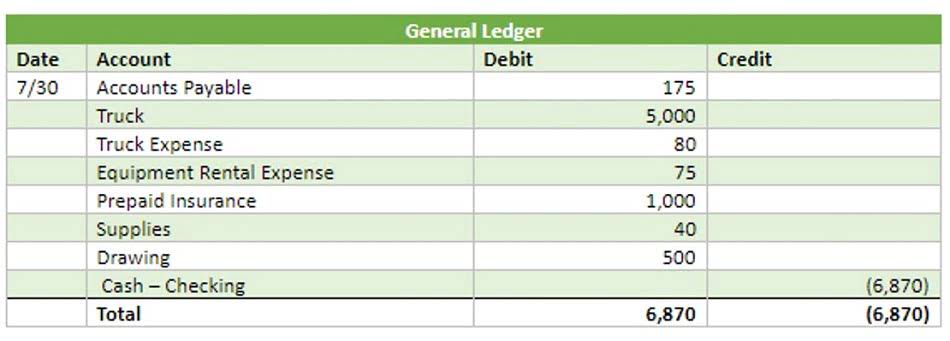
The discount rate is a critical factor in the calculation of present value. It is essentially the interest rate used to depreciate future income, and its accurate estimation is paramount. However, determining an appropriate discount rate is challenging due to the numerous factors involved – risk-free rate, inflation expectations, risk premium, and more. Fair consideration of the time value of money allows companies to objectively determine if a potential sustainable project is worth the upfront expense. This ensures that companies’ decisions to invest in CSR initiatives today are grounded in sound financial rationale. In the context of pension obligations, present value is also an invaluable tool.

Note
- The tables below show the number of periods (n) and the related interest rate (i) for four different compounding assumptions.
- Figure out the interest rate that you are expecting to receive between now and the future.
- Because we know three components, we can solve for the unknown fourth component—the number of years it will take for $1,000 of present value to reach the future value of $5,000.
- We see that the present value of receiving $1,000 in 20 years is the equivalent of receiving approximately $149.00 today, if the time value of money is 10% per year compounded annually.
- PV calculations greatly assist investment decisions because of their ability to bring future amounts into the context of the present (to time period 0).
For example, if you are due to receive $1,000 five years from now—the future value (FV)—what is that worth to you today? Using the same 5% interest rate compounded annually, the answer is about $784. The word «discount» refers to future value being discounted back to present value.
Interest Rate
So for example, a future cash rebate discounted to present value could or could outweigh the downsides of having a higher potential purchase price. The same calculation can be applied to 0% financing when someone buys a car from a dealership. In the realm of lending and borrowing, present value plays a crucial role in determining loan terms and interest rates.
Summary
- It is a fundamental concept in finance that underpins many financial decisions, from simple investments to complex corporate finance strategies.
- It is also important in choosing among potential investments, especially if they are expected to pay off at different times in the future.
- Companies with high risk are perceived as less attractive to investors, reducing their market capitalisation even if they have high future cash flows.
- These cash flows include periodic coupon payments and the repayment of principal at maturity, all discounted back to the current day using a discount rate that reflects the riskiness of these cash flows.
- Remember that present value demonstrates the concept of time value of money, that is, a dollar today is worth more than a dollar tomorrow.
Because the PV of 1 table had the factors rounded to three decimal places, the answer ($85.70) differs slightly from the amount calculated using the PV formula ($85.73). When evaluating financial decisions, present value calculations stand out for their ability to incorporate the time value of money. Internal Rate of Return (IRR) is another popular approach, which identifies the discount rate that makes the net present value of cash flows zero.

Whereas if the discount rate is higher, then the present value will be lower. Depending on Mr. A Financial condition, risk capacity decisions can be made. While a conservative investor prefers Option A or B, an aggressive investor will select Option C if he is ready and has the financial capacity to bear the risk. A contra asset account arising when the present value of a note receivable is less than the face amount of the note.


This link between risk and discount rate brings us to a central point – riskier investments result in lower present values. For example, if you were to invest in a company, the assumed rate of return could end present value formula up changing in each of the following three years. This could be due to a number of factors such as volatility in the industry or market.
- Payments on mortgage loans usually require monthly payments of principal and interest.
- In the context of pension obligations, present value is also an invaluable tool.
- After all, it is hard to relate $100,000 being spent today (a present value) to $300,000 that is expected to be received 20 years from today (a future value).
- Treasury bonds, which are considered virtually risk-free because they are backed by the U.S. government.
- It reflects the opportunity cost of capital, essentially the rate of return that could be earned on an investment of similar risk.

If you received $100 today and deposited it into a savings account, it would grow over time to be worth more than $100. This fact of financial life is a result of the time value of money, a concept which payroll says it’s more valuable to receive $100 now rather than a year from now. To put it another way, the present value of receiving $100 one year from now is less than $100.
What is the Formula to Calculate the Present Value?
- This interplay between inflation and discount rates underscores the importance of macroeconomic indicators in financial planning.
- Some electronic financial calculators are now available for less than $35.
- For example, if compounding occurs monthly the number of time periods should be the number of months of investment, and the interest rate should be converted to a monthly interest rate rather than yearly.
- Present value calculations in CSR initiatives also extend to considering future stakeholder value.
- However, the present value of that 1050 dollars (depending on the discount rate) may be less than 1000 dollars.
- When calculating present value, we discount future cash flows to present terms using an interest rate, often referred to as the discount rate.
Though simple and intuitive, this method ignores the time value of money and any cash flows occurring after the payback period. Present value calculations address these shortcomings by discounting all future cash flows, providing a more comprehensive assessment of an investment’s worth. Bookkeeping for Painters To record the cash equivalent amount through a present value calculation, the accountant must estimate the interest rate (i) appropriate for discounting the future amount to the present time. The rate will reflect the length of time before the money will be received as well as the credit worthiness of MedHealth, Inc. In a volatile market, the target company’s future cash inflows and outflows can be impacted, leading to discrepancies between estimated and actual present value.